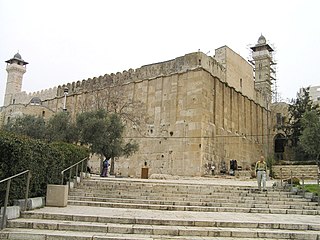Herodian architecture

Herodian architecture is a style of
Herod's architectural endeavors are distinguished by their strategic placement to maximize dramatic vistas, evident in locations such as the northern palace at Masada, the third palace at Jericho, the seaside palace at Caesarea, and the Herodium near the desert's edge. Many of his projects often combined multiple purposes, incorporating ceremonial and administrative spaces, storage, water facilities, baths, swimming pools, and fortifications. Emphasis was also placed on integrating water features and greenery, utilizing local materials like kurkar in Caesarea and limestone in desert regions. Concurrently, Herod imported exotic materials, such as volcanic sand from Italy for Caesarea, and employed foreign craftsmen for intricate decorations and the opus reticulatum technique.[1]
Innovations
Herod introduced numerous architectural innovations and construction techniques in his buildings, such as the domes inside the
. Characteristically, they have (or had) one tower higher and stronger than the others. Herod's fortification innovations strongly influenced the military architecture of subsequent generations.In line with contemporary Jewish customs, Herod generally avoided the representation of human and animal figures, even in the closed and private parts of his palaces, but there were a few exceptions. Herod's Palace reportedly had bronze figures (probably animals) through which water was dispensed.[3] Towards the end of his reign, Herod erected a golden eagle above the gate of the Temple. This caused some outrage within the city, and several youths removed and destroyed the eagle. They were subsequently executed.[4]
Herod's Temple
In the eighteenth year of his reign (20–19 BC), Herod rebuilt the
Herod's palace-fortresses

Herod constructed several lavish palace-fortresses within his kingdom. His palace at Herodium, 12 km south of Jerusalem, rose to a height of about 45 meters.[7] He also built palace-fortresses in Jerusalem, Masada, and Caesarea Maritima.
Herodian masonry
stone-dressing. This stone-dressing method—usually featuring the pale local meleke limestone—was so prominently practiced in Herod's day that it has led to such terms as “Herodian blocks”, “Herodian masonry”, “Herodian dressing”, and the like. It makes Herodian stones easily discernible from the earlier stone courses below, and later ones above, in the surviving walls at many sites. Best known is the example of the impressive retaining walls of the Temple Mount, readily visible at the Western Wall .
Enormous quantities of stone were needed for these structures and the remains of the numerous quarries used can still be found, especially in the vicinity of Jerusalem's Old City, notably those to the north known as Solomon's Quarries. Freeing the stones from the bedrock was an elaborate process: Wide grooves were chiseled with metal tools around the intended stone block. The block was then freed up by driving metal wedges into the grooves. The initial dressing of the stone was probably accomplished on site before transport. Many of these stones were very large, weighing between two and five tons. (The largest found, in the Western Wall Tunnel , measures some 12.8 meters in length, 3.4 meters high and 4.3 meters deep; it weighs about 660 tons.) Once moved to the building site, further fine chiseling was done and the blocks were hauled into place using ramps, cranes and crow bars. The stones were laid in dry courses, typically about 1 meter high without the use of any mortar. Each course was set 3 to 5 cm back from the course underneath it. Final dressing and refinements were carried out once the stones had been set in place.
The huge rectangular building blocks, laid in horizontal courses, feature flat, projecting central portions (bosses) surrounded by narrow, shallow dressed margins (“marginal drafts”) creating a finely chiseled, frame-like effect. The depressed “frame” is sunk some 2 centimeters below the smooth face of the stone and its average width is about 8 centimeters. A wide, toothed chisel was used to smooth the stone margins. The origins of this margin-cutting style predate Herod, as witnessed by the ossuaries found in the Jerusalem area.
List of major Herodian building projectsHerod's Temple (renovation of the Second Temple) in the Israel Museum .
See alsoNotes
ReferencesBooks
Films
|
